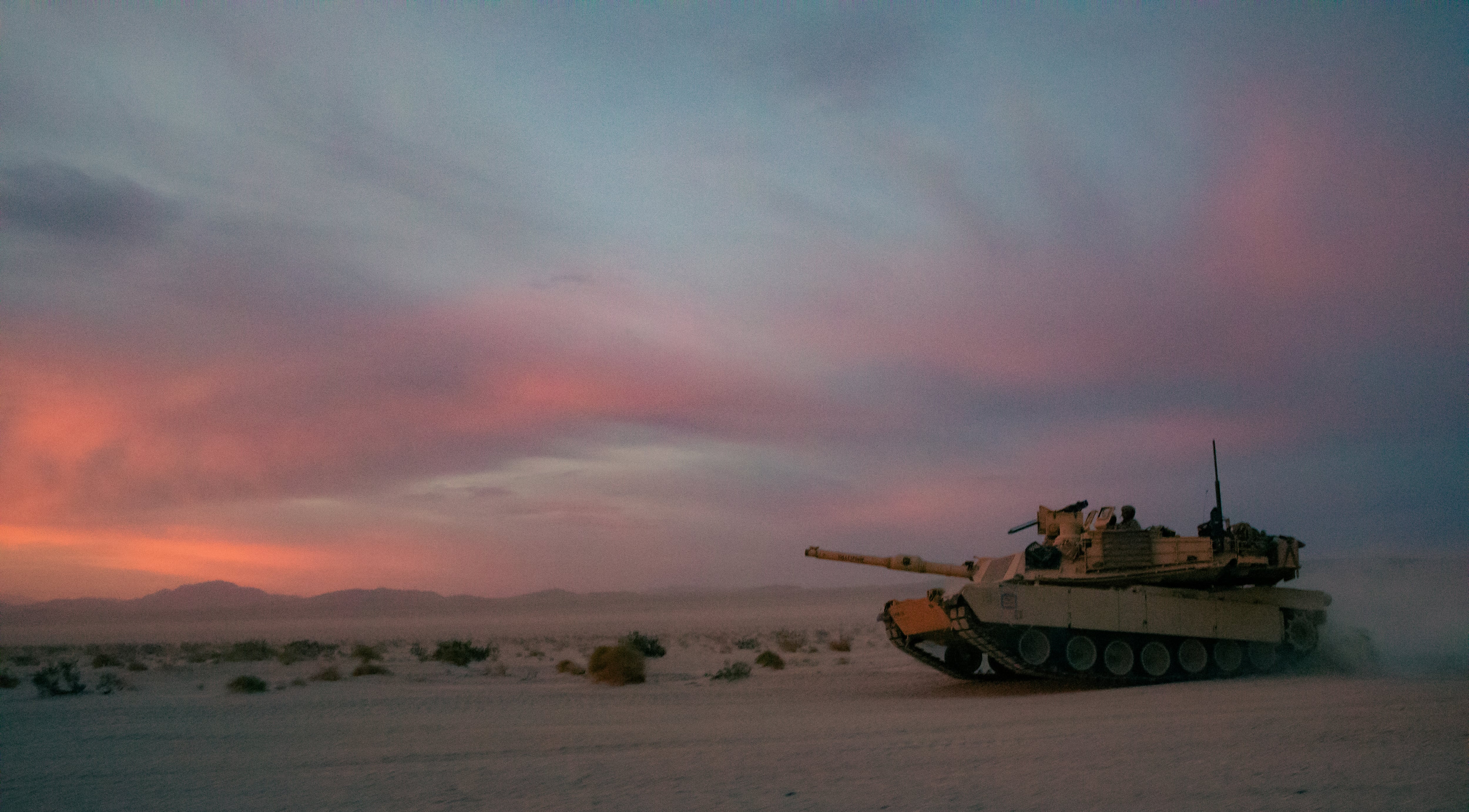Whether one is looking at aggression on Europe’s eastern borders, strikes by China against allies in the Pacific or Iranian subterfuge in the Middle East, the current answer to those problems has revolved around ubiquitous sensors to know what’s going on and longer-range, faster-moving fires to hit where it hurts.
The Navy wants more ships with better protection, and a top Air Force general called Army long range fires plans “stupid,” saying his service has that covered. The Marines spent most of the past year ditching tanks to become more nimble in their naval efforts.
But the Army looks on and its top leaders, one of them an aviator, point to an old adage: You don’t win a conflict until you control where people live — on land.
While the Army is putting a lot of its weight behind better fires, networks and sensors, it’s also doubling down on armored vehicles. That means armored troop transports, robotic battle buddies and the mainstay of the ground fight — the tank.
Those big plans are taking a short-term hit if the current Army budget for 2022 is approved.
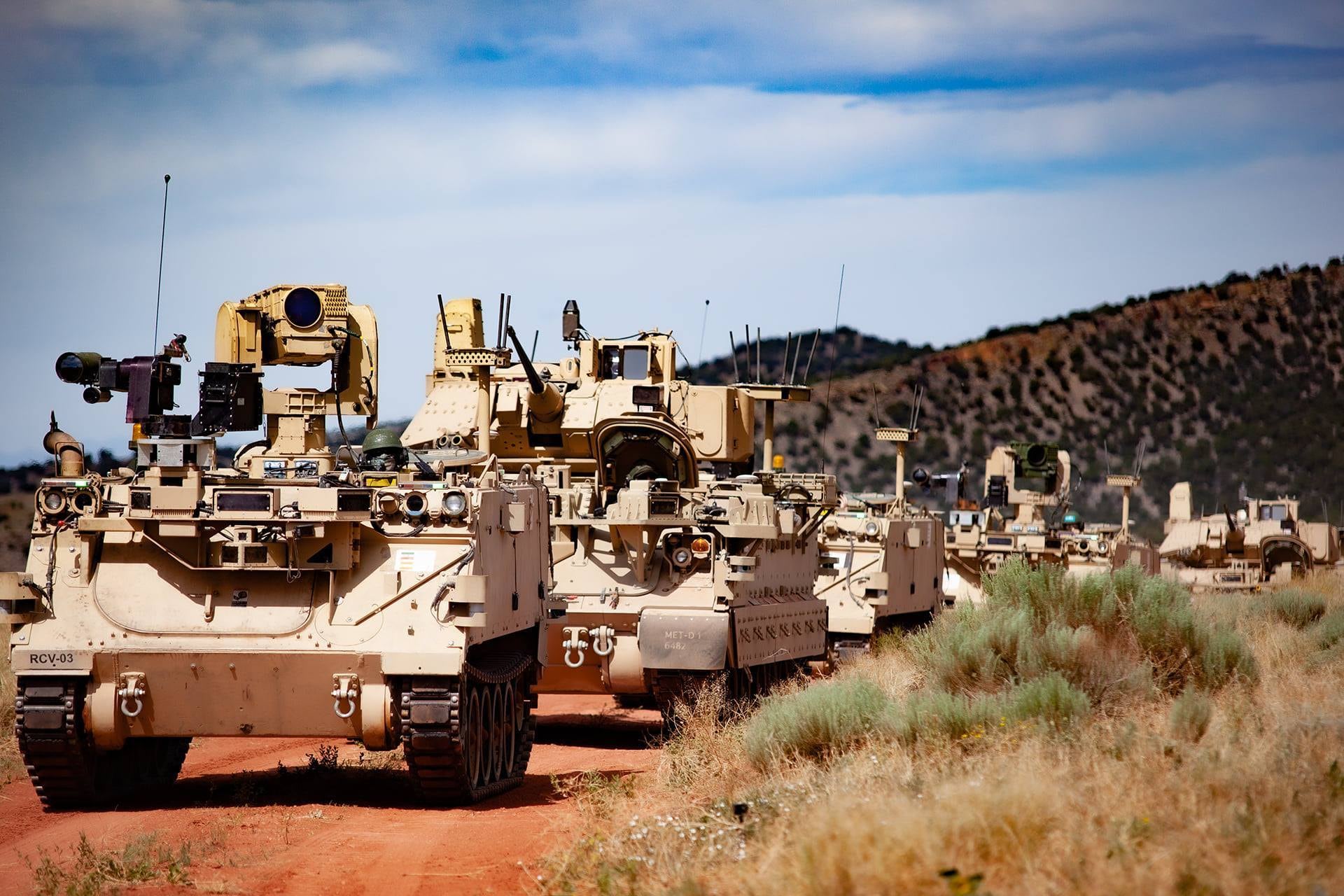
The Army faces a $3.7 billion funding cut. While the service is keeping money for the Next Generation Combat Vehicle program and continuing upgrades to existing tanks and other vehicles, they’re doing less than previously planned and slowing the rate of updating the fleet to save money for modernization elsewhere.
Those would include delays to M1 Abrams tank upgrades and a 10 percent reduction in research funding vital to creating new options for the future vehicle fleet.
Still, advances are coming in every direction, from on board drone swarms and new armor to electronic attack and defense, as well as a host of added formations to support and exploit armor’s role. Armored vehicles and formations may be unrecognizable in the next decade. But the mission remains the same — take and hold terrain.
Making the case
Maj. Gen. Ross Coffman is the director of the Army’s Next Generation Combat Vehicle Cross Functional Team for Army Futures Command. He made the case at a Center for Strategic and International Studies event in March that while Russia remains an adversary, the true threat that extends beyond its own region is China.
“Any belief that China would self limit in conflict is shortsighted to me,” Coffman said. “You can trust that in conflict they will fight globally. They’re going to use every arrow in their quiver.”
While talk of hotspots like the South China Sea and Taiwan Strait grabs attention, Coffman noted those areas are only about 5 degrees of China’s periphery. They’ve had wars or clashes with India and Vietnam in their backyard.
“China has a long history of fighting on their periphery. They use armored vehicles every time,” he said.
But China is a growing worldwide player with budding interests in the Middle East, Africa and Latin America.
“It will go global fast, faster than wildfire. You’ll go from the South China Sea to the Arctic overnight, to Africa,” he added.
Coffman and his boss, Army Chief of Staff Gen. James McConville, have repeatedly said that while the air, sea and space domains will all play a part, the land is the decisive factor in conflict.
McConville pointed to his own experience in an April interview with the Washington Post. Armored forces have real value in cities. And for years, Army leadership has talked about the increasing urbanization of warfare and the likelihood that the Army will find itself in a megacity, or at least an urban fight.
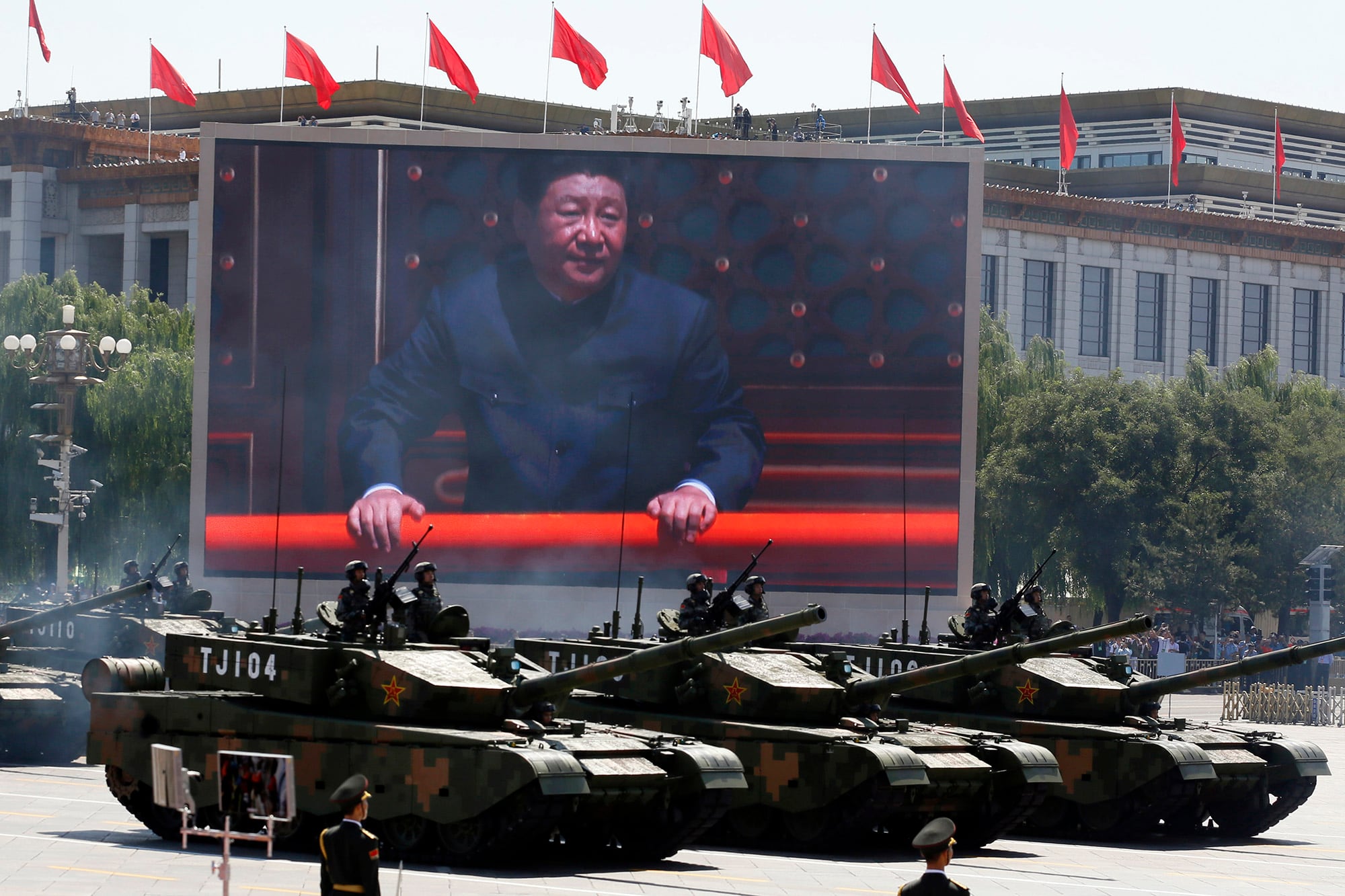
McConville previously saw armored forces used in Sadr City while serving with the 1st Cavalry Division, and how Army tanks supported Marines in Fallujah.
At the center of that maneuver, Coffman noted, is the armored force, providing mobile, protected, accurate, lethal fires in high volume.
“If you want to take land, if you want to hold land, if you want to clear land, you need the ground element,” Coffman said. “Combined arms maneuver is how we will be decisive, how we will clear and hold land.”
And committing armor sends a message.
“When you’ve called the U.S. Army, particularly the armored force, you’ve made the decision,” Coffman said. “You’re all in.”
High demand, changes needed
While high operational tempo within special operations is often at the top of the headlines, air defense and armored units have also been frequently tapped across the globe in recent years.
In 2020, McConville said he worried about ops tempo in general, but he specifically pointed to air defense artillery and ABCTs as his top concerns.
Those ABCTs on rotations to Korea, Europe and the Middle East, are also in the midst of major modernization. That means more than adding new equipment, but also training and adjusting tactics.
In 2018, the Army announced it was converting a Stryker Brigade Combat Team to an ABCT. That followed the conversion of an Infantry BCT to an ABCT the previous year.
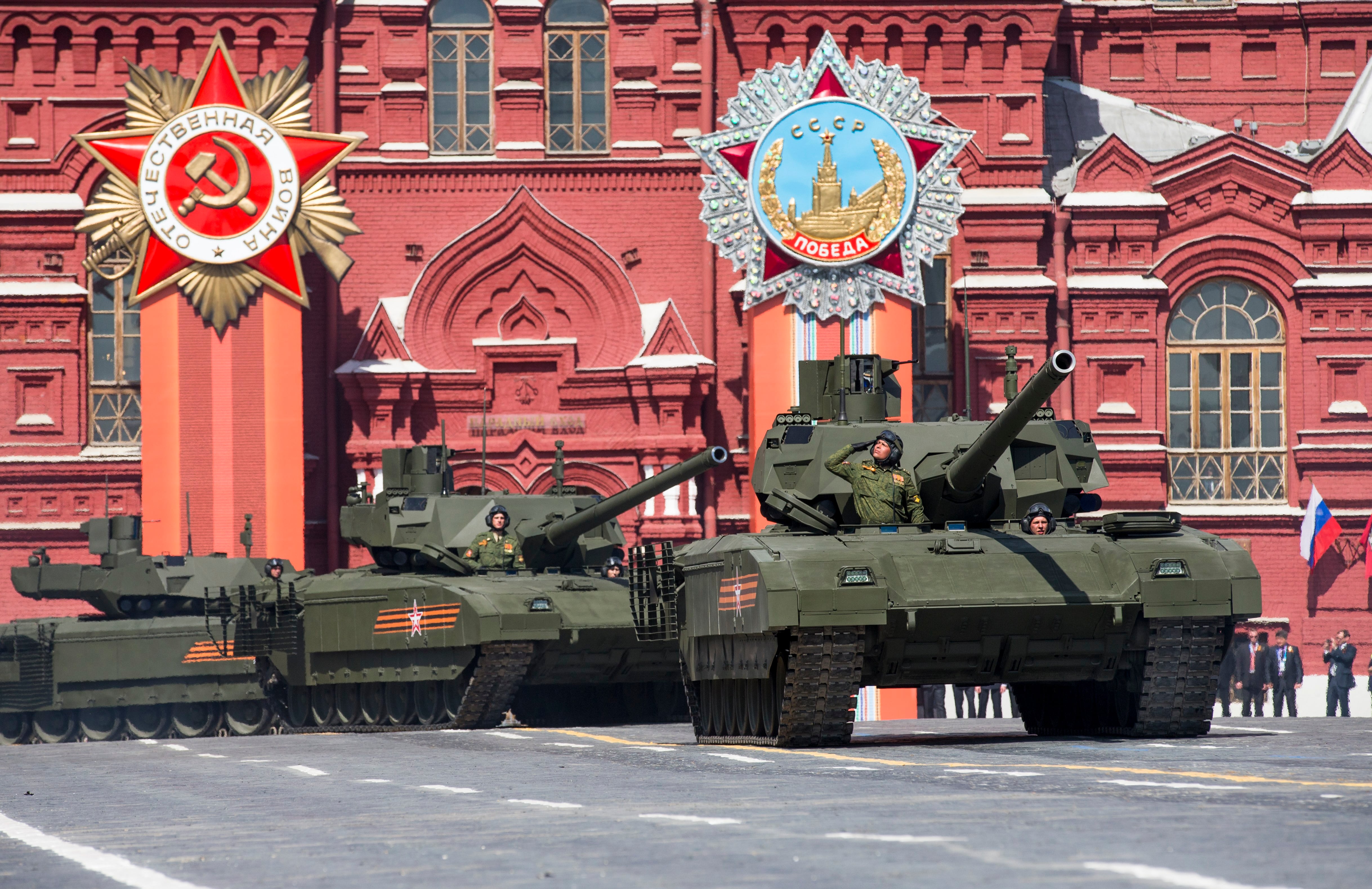
Recovering armor assets has taken years after conversions in the opposite direction during the early 2000s, when armored forces gave way to Stryker or infantry teams tailored for Iraq and Afghanistan. So, when even one BCT is converted, it’s significant.
When those conversions concluded, the Army had 11 ABCTs in the active forces and five ABCTs in the Army National Guard.
While more units gives the force added options, the technology in most of the ABCT platforms is decades, sometimes more than half-a-century, old.
To keep pace with new threats, from EW to drones and better anti-tank weapons, the Army is doing a years-long overhaul of nearly every part of the ABCT.
Adversaries and tactics
Russian officials have announced that they would field the T-14 Armata tank in 2022. They have described it as, “the best killing system on the planet.” It could arrive 25 tons lighter, faster and with as much advanced capabilities as what the Army has now.
Coffman noted that China has an estimated 7,000 tanks and 3,000 infantry fighting vehicles in its arsenal now, far outnumbering the U.S. inventory.
“In order to be decisive, we have to be there with armor to prevent the Chinese [from] getting into position of relative advantage,” Coffman said at the March CSIS event.
Retired Army Col. David Johnson now works as a principal researcher for the Rand Corporation and adjunct scholar for the Modern War Institute at West Point. He wrote two papers for Rand — one in 2011 and the other in 2016 — that struck upon many of the armor challenges the Army now faces.
Johnson told Army Times that simply looking at what China and Russia are fielding, like tanks and airborne-portable armored infantry carriers, should help U.S. planners understand what ground threats they may face.
There will be ABCTs a decade from now and they will look pretty similar to what they do now, said retired Army Lt. Gen. Thomas Spoehr, director of the Center for National Defense at the Heritage Foundation. He sees the Abrams still in the formation for possibly 60 years or more, when paired with autonomy and robotic platforms — both air and ground.
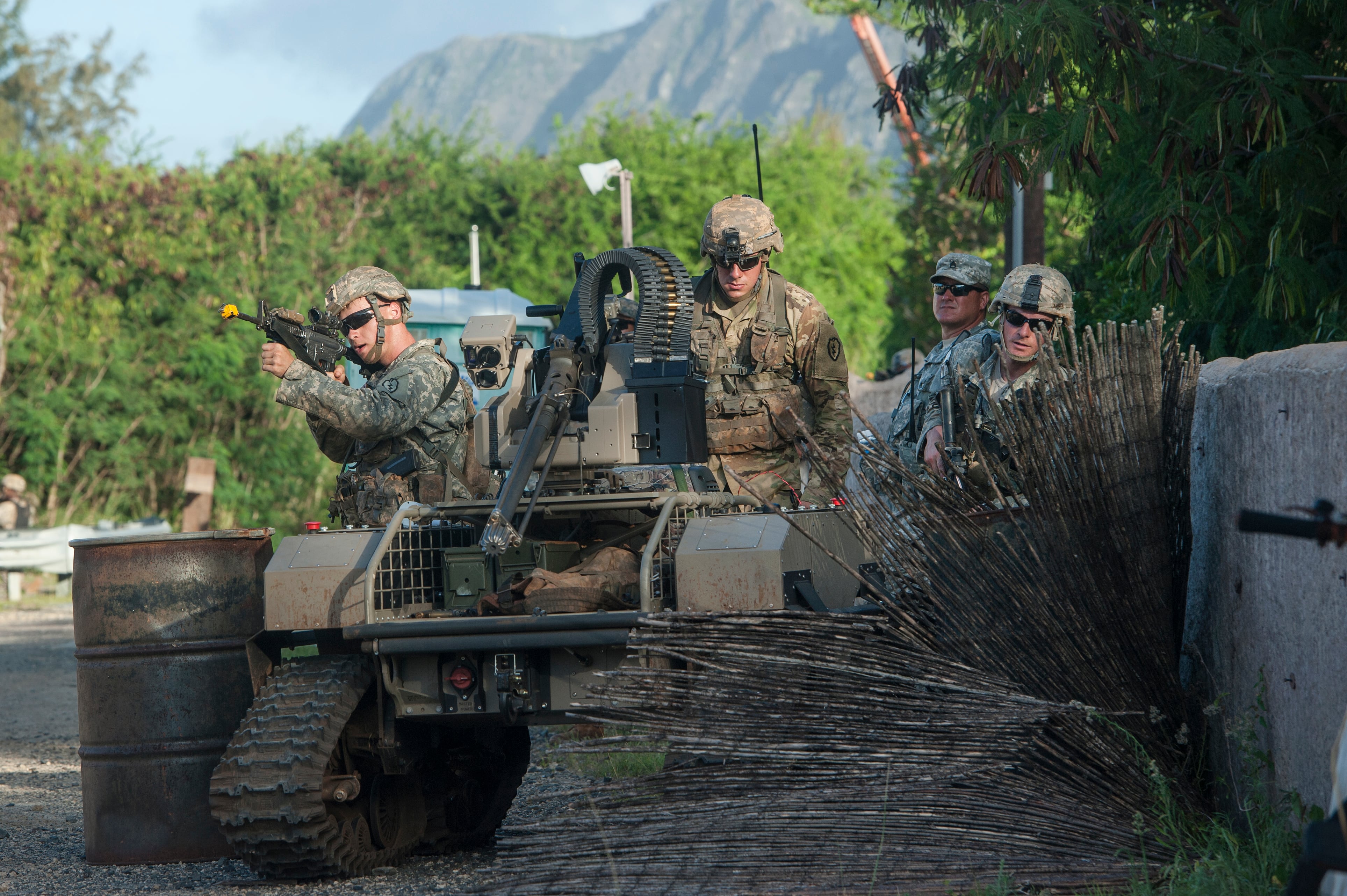
Current BCT commanders are only starting to incorporate new technologies. Future commanders will have to manage a host of tools, platforms and capabilities previously handled higher up the chain at the division or corps level, such as electronic warfare, cyber and space assets.
But while those brigades will remain, how many and where they’re located might matter more than ever. Spoehr sees two ABCTs in Poland at Russia’s flank as a key deterrent. The single ABCT in Korea isn’t bad, but another would help.
The key, though, will be recovering sea lift capability to get the tanks and other heavy assets ashore or move them around the theater, especially in the Indo-Pacific region.
Army veteran Paul Scharre helped establish policies on unmanned and autonomous systems in the Defense Department. He is now the vice president and director of studies at the Center for a New American Security. He is also the author of “Army of None: Autonomous Weapons and the Future of War.”
He, too, said that the ABCT is a useful tool — if it’s available.
“The biggest concern I have is a bunch of tanks in Fort Hood isn’t going to help you in a conflict in Russia,” Scharre said.
He argues that the Army’s role in the Pacific is more supporting than leading, and it should continue to focus efforts on Eastern Europe, where the ground component should be present and ready.
That means an ABCT in Europe will likely look different than one on rotation in the Middle East, Africa or the Pacific.
The past two decades of counterinsurgency and counter terrorism has seen the Army focus warfighting at the company or platoon level, Scharre said. But optimizing for a fight against Russia or China raises that to a division or corps-level fight.
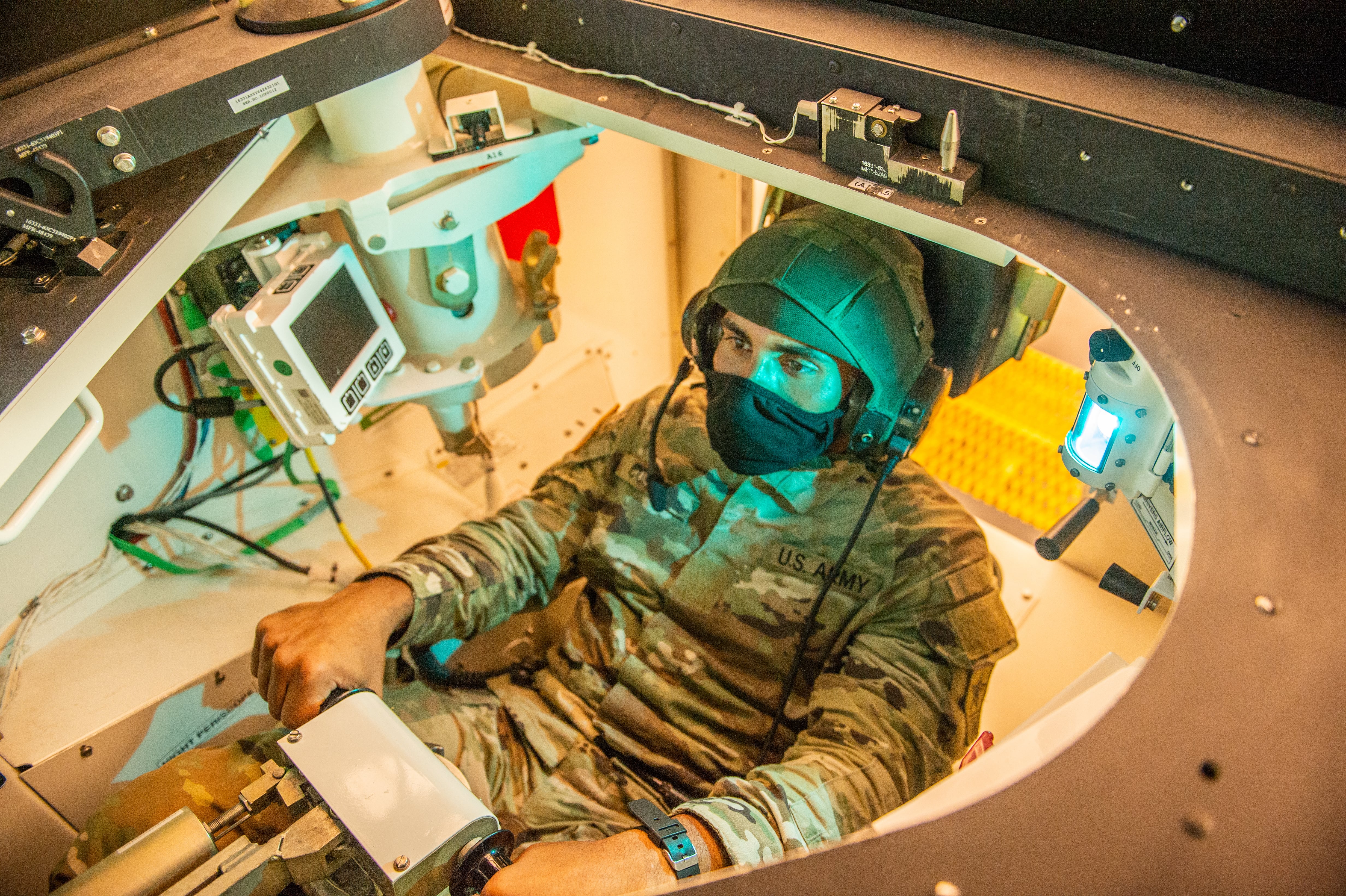
Deploying armor brigades must look to where they’re headed, watch their likely adversary and study what equipment their unit needs organically, rather than rely on being sent equipment from higher up.
Johnson noted that much of the ground gear of China and Russia looks very similar. Being prepared to confront one can help with the other.
And for near-peer threats such as North Korea — with a seemingly endless stock of artillery pointed south — armor is vital.
“If you don’t have armor, you’re not even a speed bump, you’re an artillery sponge,” Johnson said.
Experts roundly agreed that what might be most likely is the United States ends up engaged with a proxy of one of its adversaries. There, a fully-equipped ABCT can still be useful.
“The next war is likely not in mainland China or with Russia,” Spoehr said. “It’s with a third party, maybe equipped by the Russians or supported by the Chinese.”
For lessons on what that might look like, some have been pointing to a very recent conflict.
Nagorno-Karabakh and armor
Recent fighting in the disputed territory of Nagorno-Karabakh between Azerbaijan and Armenia has given armor supporters and detractors a lot of talking points since fighting concluded in late 2020.
Depending on the take, the destruction of tanks by precision drone strikes either spelled the end of armor as we know it or served as an example of what unprotected, poorly deployed armor would face.
Experts have pointed out that Armenia used Soviet Union-era tanks without solid overhead defenses.
Spoehr said that the Armenian forces presented the most vulnerable formations by lacking any real counter-drone capability.
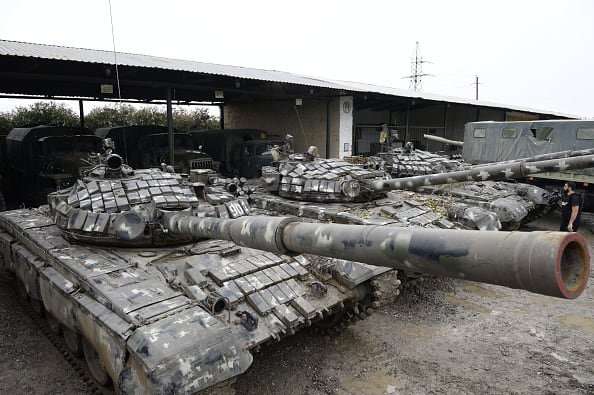
Most modern tanks being deployed by the United States, Russia and China carry advanced armor packages, sensors, active protection systems and work in concert with associated ground-to-air defense and air forces.
Retired Army Col. John Antal, who commanded tank and combined arms units from the platoon to regimental level, points to this conflict as a real-world example from which Army leaders, especially ground combat commanders, should draw lessons.
Writing on the Army’s Training and Doctrine Command-led “Mad Scientist” blog, Antal said the conflict hints at what challenges armor commanders and others will face — avoiding being sensed and protecting vehicles that don’t involve armor from drone swarms and more.
Improving and replacing
While the M-1 Abrams has been running since 1980, a series of upgrades has kept it at the center of the formation, where it will likely remain for the coming decades, though with improvements.
For instance, the Army is testing the Modular Active Protection System, which has sensors and countermeasures to find, track and destroy anti-tank guided missiles and rocket propelled grenades.
But rather than fleets of manned Abrams rolling alone, other vehicles will take on old and new tasks to ease their burden. Despite a nearly $4 billion overall cut, the Army still plans to spend $1.46 billion next year alone on Next Generation Combat Vehicles, a top modernization priority.
Tanks and Strykers will get upgrades, to the tune of 70 tanks at a cost of $981 million and 187 Strykers with a price tag of nearly $1 billion, according to the most recent budget proposal.
And an Optionally Manned Tank is likely to fight alongside the Abrams. The Army expects to have prototypes of the robot tank after selecting the builder by 2023.
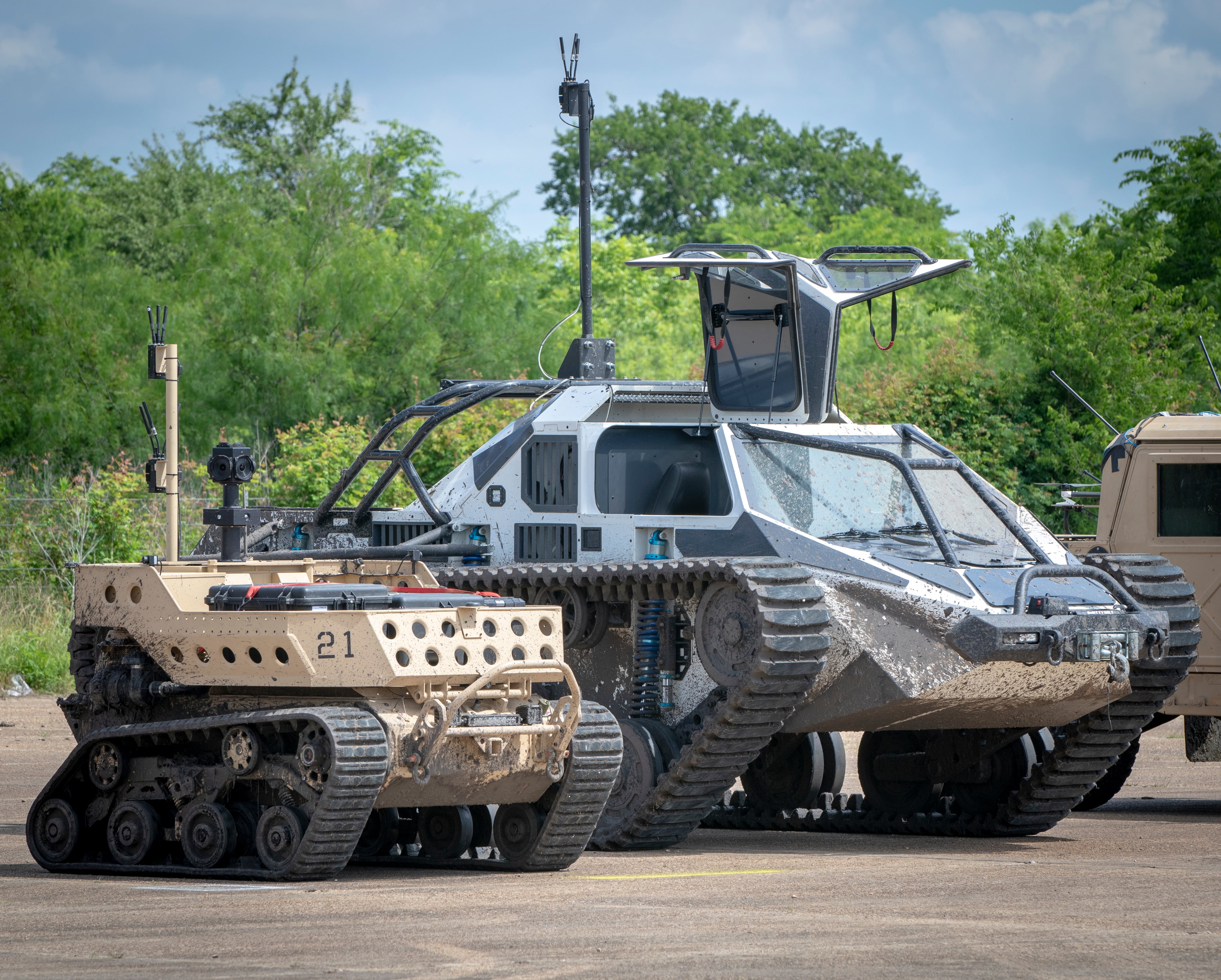
The vehicle will act as a kind of sensor node, pulling in data from other surveillance platforms, such as drones or ground sensors and using artificial intelligence to not just detect but identify threats in its area.
Also, the Army has been working on its Robotic Combat Vehicle program, which is developing light, medium and heavy versions of what would serve as wingmen for manned ground vehicles and tanks. Light and medium versions are headed for assessments by soldiers at the company level next year.
The Army is also looking to return to early armor roots with a light tank, which will push tank capabilities out of the armored brigades and give IBCTs a new tool.
The program, dubbed Mobile Protected Firepower, essentially aims at giving a type of airborne-transportable light tank to its infantry and quick response forces.
The MPF isn’t built to go after enemy armor.
Instead, it’s expected to be a more robust firepower platform that can go places heavy tanks can’t. That’s because they want it to be air-dropped and its weight and dimensions allow it to cross weaker bridges and narrow passes that would stymie a big tank.
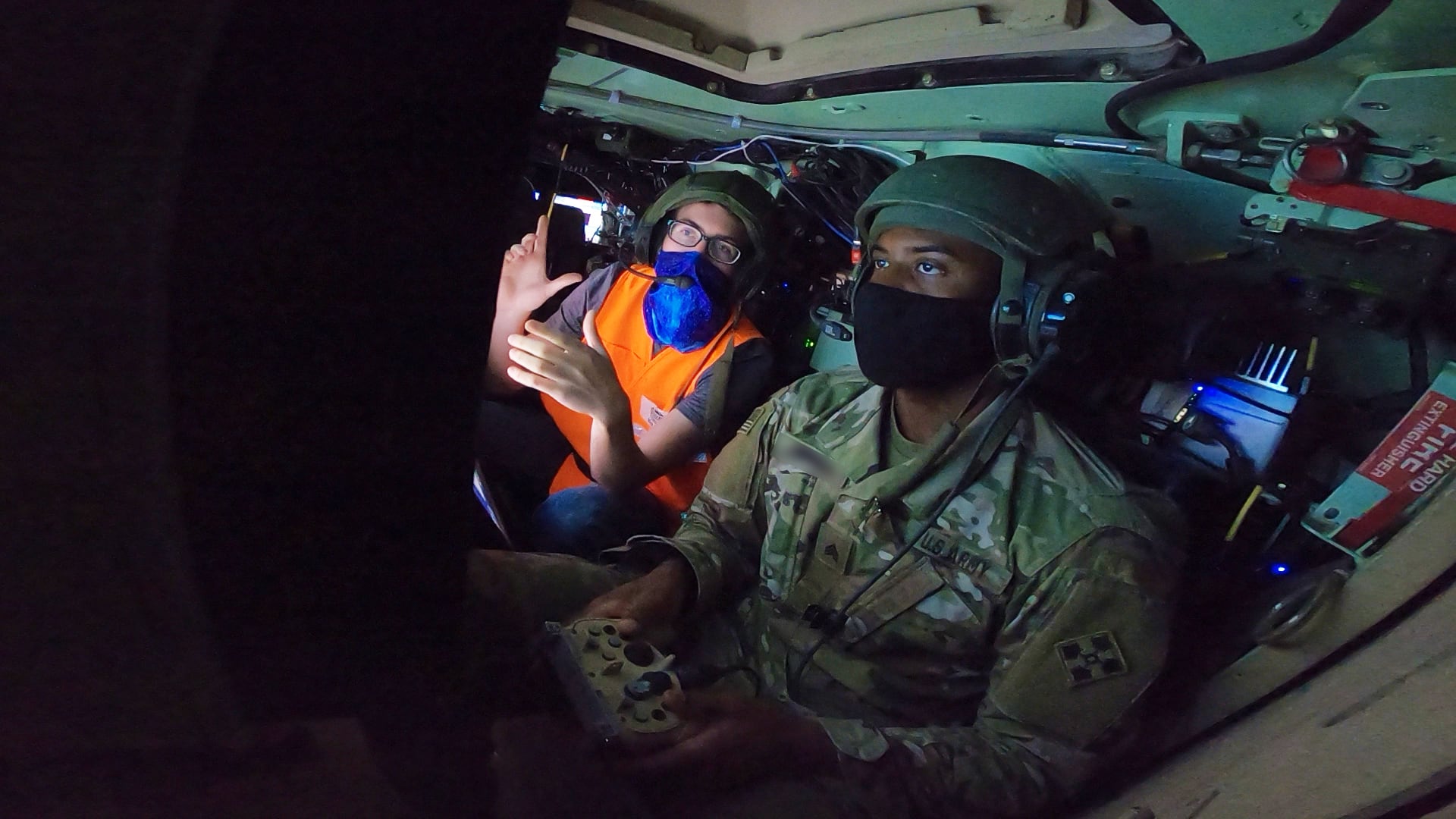
Two companies had prototype vehicles in developmental tests at Aberdeen Proving Ground, Maryland, this past October.
The 82nd Airborne Division has soldiers kicking the treads on the two light tank prototypes from January to June 2021.
The OMFV program is the Army’s effort to replace the aging Bradley Fighting Vehicle, which has been in service since the 1980s.
By early 2023, Coffman said, the Army expects to pick three companies for testing prototypes. The winner and new fighting vehicle is scheduled for 2027, with a battalion’s worth of OMFVs fielded by 2029.
Armored Multi-Purpose Vehicles are also a long-awaited replacement for the M1113 armored personnel carrier, which has been in service since 1960 and makes up nearly a third of the Armored Brigade Combat Team’s tracked fleet.
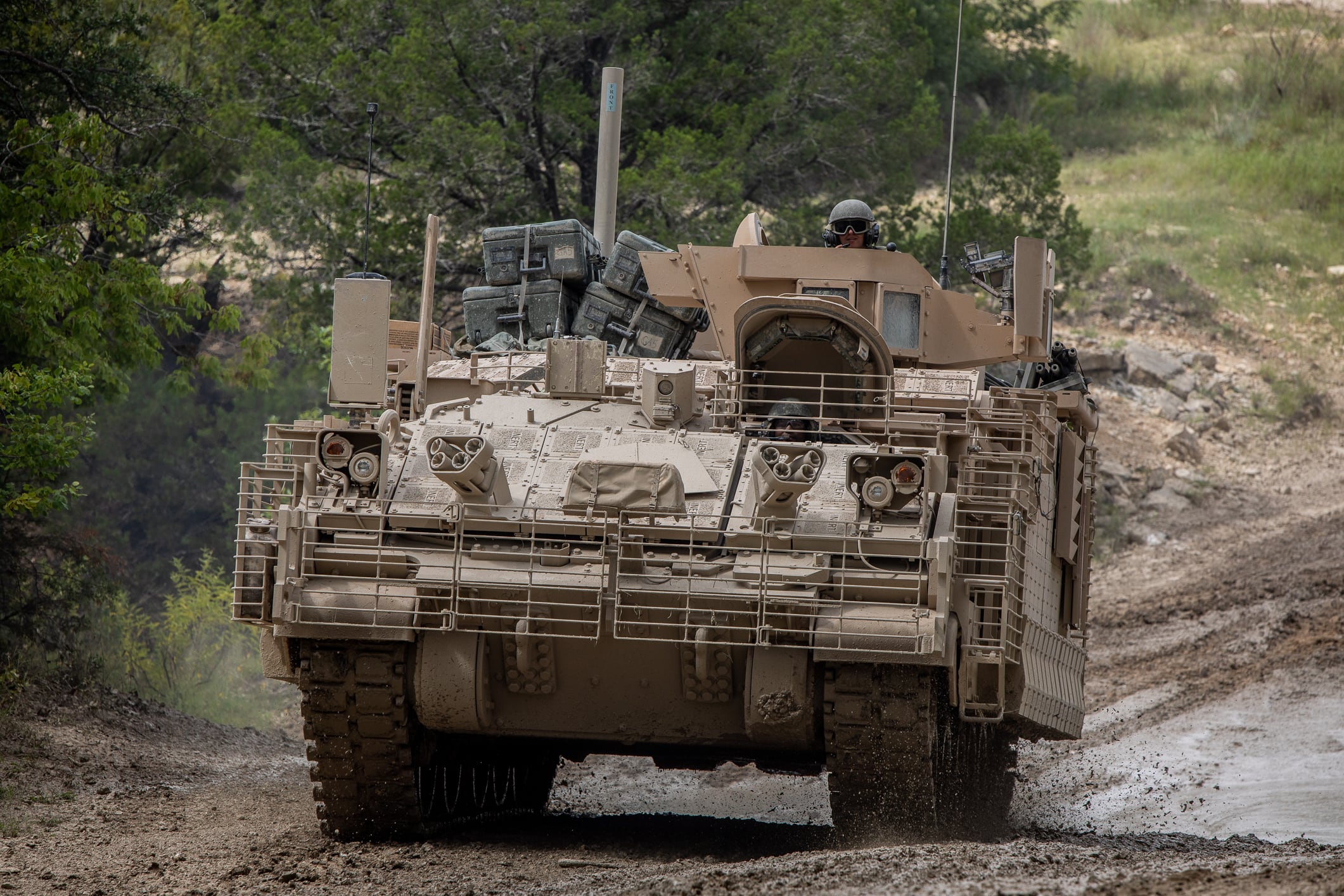
The AMPV will field multiple variants, including a general-purpose vehicle for resupply and casualty evacuation; a mission command variant with communications and network systems; a medical treatment vehicle for a “mobile protected environment” for a surgeon and medical staff; and a medical evacuation or ambulance version.
Additionally, Capt. Chrisopher Telle posed the question as to whether the Army needs a medium tank in its ranks in the Winter edition of Armor magazine titled, “A Balanced Team: The Need for Options in Armored Warfare.”
The Abrams weighs in at more than 80 tons, while adversary tanks are considerably lighter, such as the Russian T-14 and T-90. The Chinese type 98 all fall between 50 and 55 tons. That lighter load makes them more maneuverable, Telle wrote.
The captain argued that a medium tank would restore the Army’s ability to fight a peer threat in a variety of terrain with less logistical constraints. Therefore, it would best fit into the Stryker Brigade Combat Team formations.
For now, this is simply the brainchild of Telle, but Army officials have kept open the idea of a range of vehicle types in their public discussions of the Next Generation Combat Vehicle program.
All-robot attack? Not quite yet
For at least the coming decades there will continue to be a role for humans on the actual battlefield, but a different one than today, Scharre said.
While aerial drones can be flown continents away by pilots in Nevada, that’s not the same as running ground vehicles.
Scharre sees a human-crewed tank moving farther back from the frontline fighting as disposable autonomous or controlled systems move into the close force-on-force role.
For that, a tank and other crewed armor assets will work more like control nodes, directing the nearby battle in a protected role.
He likens the advancing role of crewed armor to that of infantry forces in large-scale combat – a mopping up force.
And those changes won’t come all at once, but as technology, tactics and experience develops.
How these things change concepts of operations will be different in 2025 than in 2030 or 2035, Scharre said.
Todd South has written about crime, courts, government and the military for multiple publications since 2004 and was named a 2014 Pulitzer finalist for a co-written project on witness intimidation. Todd is a Marine veteran of the Iraq War.
